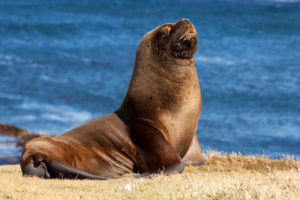Interesting facts about sea lions
 Amazing animals, known as sea lions, are found mainly where there are almost no people. They prefer harsh places where they, however, easily manage to survive, and the only thing that really poses a threat to them is the person and his activities. Due to the spread of civilization, their habitat is steadily declining, which threatens the existence of the entire species.
Amazing animals, known as sea lions, are found mainly where there are almost no people. They prefer harsh places where they, however, easily manage to survive, and the only thing that really poses a threat to them is the person and his activities. Due to the spread of civilization, their habitat is steadily declining, which threatens the existence of the entire species.
Biologists include sea lions as seals.
In total there are five types of these animals. They differ from each other quite strongly.
The largest sea lions live in the northern seas. They reach a length of three meters and a weight of one ton.
At one meal, a sea lion absorbs an amount of food equal to 5-7% of its own weight. They feed mainly on fish.
Diving under the water, they store oxygen not only in the blood, but also in the muscle tissue. On average, an adult sea lion is able to stay under water for up to 25-30 minutes. However, usually these animals float to breathe more often.
These amazing creatures have been living for quite a long time – twenty to thirty years.
Sea lions are able to swim across seas and oceans. During the journey they travel thousands of kilometers.
Females of these animals bear babies for twelve months.
Fat reserves allow sea lions to go without food for several months without damage to health.
From the point of view of industrial extraction, these animals are not interesting to anyone, but due to environmental pollution and global climate change, their population may soon decrease to alarmingly small scales.
Each year, about a hundred thousand people visit a nature reserve in Australia with one goal – to look at sea lions in the wild.
On the Galapagos Islands, the sea lion acts as a symbol, and not the iguanas for which these islands are famous.
The sharp teeth of these animals are used by them only to catch and tear prey. Then they swallow it in large chunks, without chewing.
The average swimming speed of a sea lion is about 15-17 km / h, but if necessary, they are able to reach a speed of up to 40 km / h in water. On land, these animals, of course, are much more clumsy.
Sea lions are able to dive to a depth of 250-300 meters. This is not possible for any diver without a special hard suit, dome or other equipment – the pressure at such depths is already too high.
Females of these animals are usually much smaller than males.



























